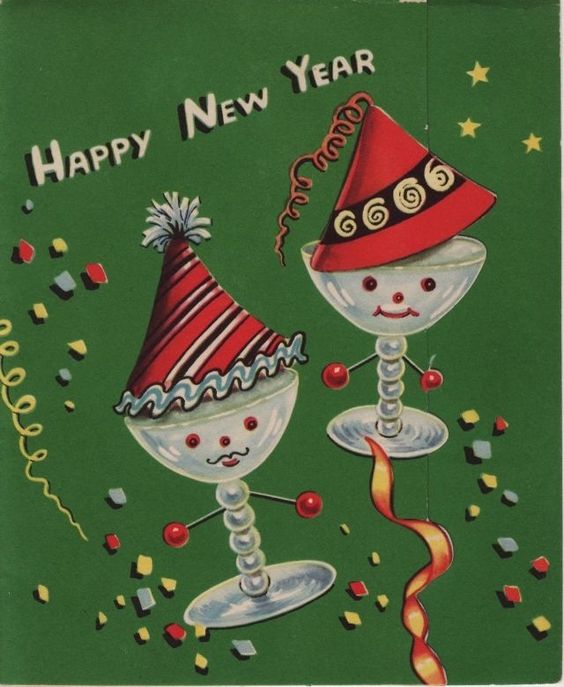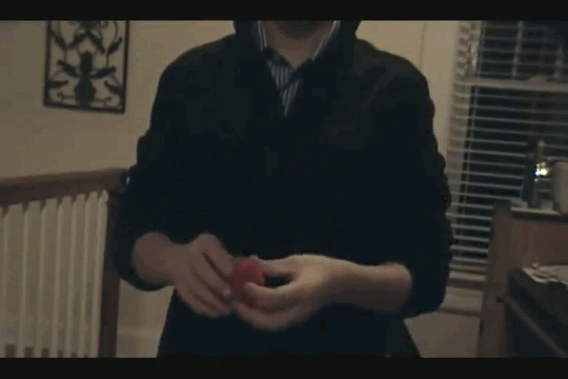RTP: A Happiness Practice
/Today, as we get ready to turn the calendar page to 2019, I want to talk about a mindset that has improved my quality of life in recent years.
We all know people, maybe you’re one of them, who tend to live in the past. Perhaps they’re having a hard time moving on from some past trauma, or they’re looking at the past from the opposite perspective and they romanticize some time period or relationship from bygone days. I think we all recognize the danger of indulging too much in this kind of mindset. At best it’s unproductive and at worst it can be paralyzing.
I’ve been fortunate that I’ve never really fallen into that mentality. I’m able to look back fondly on the past, but not live in it. And I’m pretty much immune to the negative impact of past setbacks, pain, or trauma.
Instead, I spent a lot of time focused on the future and investing my time and effort in ways that would pay dividends down the road. Not only did this lead me to be more productive than the people I knew who were stuck in the past, but looking ahead just seemed like a more motivating way to go through life.
But, I’ve come to realize that this can be something of a trap as well. “Building towards the future,” is great, but I think it can be a lie we tell ourselves too. “Yeah… now kind of sucks. But if I put in the work now, then I can reap the rewards in the future.” The future—which may or may not come as we intend it to—is often the excuse we use for not living our life today in a way that brings happiness and excitement.
Okay.. gee, thanks, Andy… what is this? A post to tell us to “live in the present”? Wouldn’t a picture of a shitty motivational poster have accomplished the same thing?
No. I’m not telling you to live in the present. First off, I’m not even really sure what that phrase means. If you’re telling me to live in such a way that I take as much pleasure as possible from the present moment then you’re essentially telling me to lay on the couch watching tv, jacking off, and deep-throating a tube of cookie dough. That’s not the “happiest” thing I could achieve in my life, but at any point in time, it might be the most immediate thing I could do to enjoy that moment.
“Live” is about as passive a verb as you can get. So… live in the present? What does that mean? How is that actionable?
I don’t suggest you live in the present. My suggestion is this…
Romanticize the Present
I mean the word “romanticize” in two respects. First, I mean it in the way we say “romanticize the past.” That is, to look at the present with rose-colored glasses, to de-emphasize the problems and to focus on the things that make you happy. Don’t wait 20 years to look back fondly on this period of your life.
Second, I mean “romanticize” in the straight dictionary sense: invest with a romantic character.
And by “romantic” we’re talking these synonyms: adventurous, charming, chimerical, daring, dreamy, enchanting, exotic, exciting, fanciful, fantastic, fascinating, mysterious, passionate, wild.
If your focus is on the past, the rest of your life may end up passing you by without bringing you any joy.
If you’re always working towards “the future” you may end up sacrificing the present for something you find out you didn’t really want. You may find out that working 12 hour days in your 30s, 40s, and 50s, so you could retire and drive an RV when you turned 60 was a mistake.
If you choose to simply live in the present, then your life might consist of a daily pleasantness of ordering pizza, playing video games, and ripping bong hits, but your days will blend into each other. You will become so enmeshed in the present that you aren’t creating unique memories to look back on with fondness, or generating things to anticipate in the future.
Ah, but what if you choose to romanticize the present? What if you look at your life as a series of small memorable adventures for yourself and those around you? Then you’re creating positive, lasting memories while at the same time generating anticipation for near-future experiences. And in the present you’re focusing on the positive and creating moments that bring you and those around you happiness. You aren’t just “living” in the present, you’re actively putting effort into molding the present to your liking.
Yeah, that’s great, Andy. I don’t have time for that. I have a mortgage to pay.
I live this way and I make money.
Sure, but you’re a once in a generation—nay, once in a century—type of talent. I haven’t been blessed like you have been.
That’s true. But look, this isn’t a lifestyle that demands all your time and money. In fact, part of what pushed me in this direction was thinking back to being a kid in the 80s (a time when I had no money) and thinking about all the memorable exploits my friends and I had back then. Why? Well, because we were constantly pursuing adventure.
If I ask you the memorable things that happened to you in 2018 and you have to search and search for an answer and eventually you say, “My mom got cancer,” that feels to me like you’re not living your best life.
I try to have some new adventure brewing in my life every few days or so. A meetup with someone, an excursion, trying something for the first time, creating something, or whatever. Always have some little thing on the horizon. That’s not to say you shouldn’t have big plans too. But I know people who work all year planning for one 10-day vacation in September and if that is anything less than perfect, then this one exciting adventure for their year goes down the drain. And even if it is great it often feels like it still didn’t live up to the build-up.
But if you’re regularly engaging in new undertakings and trying new things, then you can be a little more daring and adventurous. If something doesn’t work out, then you only “wasted” a couple weeks of planning and you have something new coming up just around the corner.
Let’s say you go at a leisurely pace of one interesting, memorable experience a month. At the end of a year when someone says, “What were the highlights of your year?” you have 12 distinct memories of some new thing you did or place you went. These don’t have to be huge deals. Maybe they’re a day-long road-trip or a concert you went to or a five-minute short film you made. You’ll still be ahead of the game. I know this because I ask people all the time, “So, what were the highlights of 2018 for you?” And most struggle to have any answer at all. In the end, they’ll usually spit out something they could have said any year. “Thanksgiving was nice.” Or something like that.
You’ll feel like the Dos Equis Most Interesting Man in the World if you can name just 12 relatively minor things. “Oh, I took a pizza making class and now I can make this amazing homemade pie. I went snowboarding in Vermont last February. Carol and I went for a weekend in NYC and saw My Fair Lady on Broadway. I joined a softball team and we lost a game 43-0. Me and the kids went camping during the Perseid meteor shower. Pat and I took a road-trip to the last remaining Howard Johnson’s.” Etc., etc.
The goal is not to sound like someone who is engaged with life. The goal is to be that person.
As long-time readers probably recognize, I came to this mindset through magic. In The Jerx, Volume One, I wrote about the Romantic Adventure style of magic presentation. This is a style that is not just a demonstration of your skill, but instead involves something more immersive for the spectator. They participate in the presentation rather than just witness it. This style evolved from short interactive pieces to more long-form ones, where the trick would be a part of a larger experience. Not only did I find the tricks to be much more powerful in this style, I also found that they were more enjoyable for myself and the spectator. Performing in this style had enriched my life. I could look back and see 100 little experiences that I had crafted for people and each one was a distinct memory for me. This proved to be significantly more rewarding than a jumbled/vague memory of showing people card tricks over the course of a year.
And the reaction to this type of performance was overwhelmingly positive. One time I asked a friend if she wanted to see something weird and I took her on a 40-minute drive to a waterfall that has a natural gas flame that’s lit behind it. While we were there I showed her “something strange that happens in this area.” After the trick she looked at me and said, “This feels so indulgent.” I asked her what she meant and she said, “I never take time for things like this.” What she meant was she rarely ever takes time to do something just for the sake of doing it.
For many of us, life frequently amounts to the same dull things over and over again, interspersed with some periods of big tumult (changing jobs, moving, ending a relationship, etc.). Often we only fill our lives with things that require no effort (watching tv, playing video games) or things that we have to do (mow the lawn, go to work). To set aside an hour of planning and a few hours of execution for something that is ultimately inconsequential is kind of a rarity, but I think it’s these things that can generate the most happiness.
From there, the idea of the “romantic adventure” as a lifestyle choice developed. You see, the words “romance” and “adventure” both imply a kind of impracticality. Grand romantic gestures and big adventures both suggest things that were done for no practical purposes. I figured including more of such things in my life could lead to even greater enjoyment. And that’s saying something because I figure I was probably already in the 99th percentile for happiness. But it worked. Including small, indulgent, impractical adventures regularly in my life made me happier and gave me more opportunities to appreciate the present.
If any of this resonates with you—if you feel your life could benefit from romanticizing your present—here is what I recommend. Once a month (and that’s really a beginner pace, you want to work up to at least once a week) you’ll want to come up with some sort of mini-adventure. What constitutes an adventure? I think of it as something that requires some time, energy, and a little planning but that doesn’t serve any real purpose other than the enjoyment and satisfaction of the experience. So that could be: organizing a party, going on a hike, taking a class in something that isn’t for work, hang-gliding, going on a police ride along, taking a road trip, visiting some “haunted” locations, submitting a pie in the baking contest of your state fair, seeing concerts, exploring some abandoned places, going to see some high school plays, going to a minor league baseball game, having sex in nature, learning to cook something new, visiting someone you haven’t seen in a long time. These are examples, not suggestions. Do the things you like. Bring people along or go by yourself. (If you’re going to have sex in nature, bring someone else. Shoving a pinecone up your ass doesn’t count.)
And, of course, you have an interest in magic which is tailor-made for bite-sized adventure. Crafting an experience for someone else is also an experience/adventure for you.
Eventually you want to plan these things as frequently as your schedule will allow.
You have a family and a day job? I understand. But you still watch four hours of tv a night. You can fit a little adventure into your life.
I like to find something interesting to do every few days. I’m never really stuck for an idea. I find books and websites with interesting places to visit. I reach out to people I haven’t seen in a while and plan meet-ups. I’ll just start driving and spend a night in a town I’ve never been to. Once you open yourself up to it, you’ll find ideas everywhere.
Further Reading:
Read more about the Romantic Adventure style of performance here and here.
Read The Secret to Happiness Part Two to see how I incorporate big, long-term goals in my life. I haven’t abandoned these types of goals.
Read How to Slow Time for an earlier look at a similar idea.
Happy New Years, everyone.


















